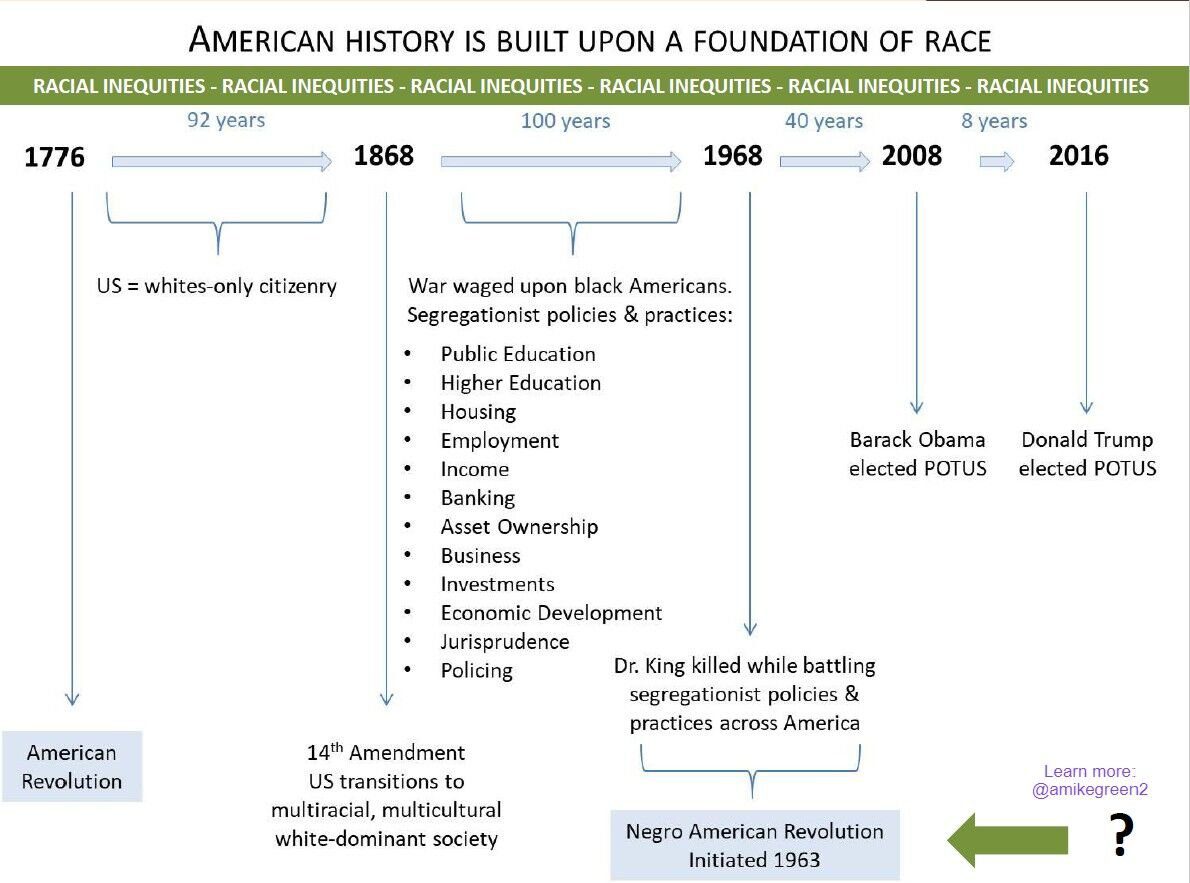Editor’s note: This is part three in a three-part series. Click here for part one, “How to Increase Black Productivity and Racial Equity” and here for part two, “Establishing Conditions Conducive to Growth of Black Businesses and Entrepreneurship”.
Racial equity has long been a problem since the end of the Civil War when white people had to grapple with the moral dilemma of what to do with four million newly freed Black people who were penniless and powerless in a nation established for the benefit of a white-only citizenry.
The problem has experienced a range of responses, starting with a political battle over providing an economic foundation for Black people (1865), civil rights, (1866) and U.S. citizens (1868) with voting rights for Black men (1870). This ongoing battle among white Americans has raged on since the Supreme Court sanctioned segregation (1896) and officially decided this was a society of two Americas, one white wealthy and powerful, the other Black poor and powerless.
We all inherited a 20th century system of segregationist policies and practices. The question we grapple with today is how do we redesign and reconstruct the segregationist society we all inherited to be a more equitable and inclusive society for a multicultural society?
RACIAL EQUITY RISES
In the wake of the police killing of George Floyd and others (and the latest point-blank policing shooting of Jacob Blake in Kenosha, Wisconsin, that triggered a walkout by NBA and other pro sports players), racial equity has again risen to priority status across the nation. But what does “racial equity” actually mean and how is it measured?
It really depends on who you ask.
In Indianapolis, for example, the city-county council adopted a resolution to establish a committee responsible for creating and implementing a plan to end racial and social disparities across the city. The Indianapolis Recorder reported on the historic effort known as Proposal 85. An excerpt:
“City and County departments should use all available tools to work to eliminate disparities based on race, place, or identity across key indicators of success, including health, education, criminal justice, the environment, employment and the economy; and to promote racial and social equity in the delivery of City and County services. This work may include implementation of racial equity tools in budget, program and policy decisions, including review of existing programs and policies.”
In June, the Central Indiana Community Foundation teamed up with Eli Lilly and Co., along with the Lumina Foundation, to form the Central Indiana Racial Equity Fund. The fund will support efforts to improve relations between the community and police and alternative pathways for youth involved in the juvenile and criminal justice system.
Indianapolis Public Schools defines racial equity as, “Creating an IPS community where student outcomes cannot be predicted by race or ethnicity.” IPS began working with the Racial Equity Institute five years ago to establish a vision with measurable outcomes for racial equity in their school district. This summer, a year after formally appointing Aleesia Johnson as the first Black woman IPS superintendent, the IPS Board of School Commissioners adopted a new racial equity policy and resolution in support of “Black Lives Matter.”
RACIAL EQUITY HISTORY MATTERS
Yet, despite much conversation and consternation, what measurable systemic changes have occurred? To achieve racial equity in a society established on a white supremacist foundation of racial inequity, there must first be a common ground set of accepted facts, information, beliefs and understanding. From that foundation we can begin to discuss how to disrupt the policies and practices we all inherited to develop a common ground of conversations that lead toward productive actionable steps.
Public schools teach us to think getting a good education and a good job are the building blocks to wealth. This is a distortion of the facts. The Minority Business Development Agency offers a cogent view for consideration:
“The United States is home to inseparable racial disparities in wealth, access to capital, and business ownership. Wealth and capital are a prerequisite rather than just a product of entrepreneurship, and Black Americans have been systematically prevented from accumulating wealth and accessing capital for centuries.
“It is more than clear that the United States cannot hope to close the business ownership gap without first addressing racial disparities in wealth and access to capital.”
“How Do We Get There From Here,” will be the focus of my discussion at the Beyond 2020 Indiana Minority Business Conference on Aug 28-29, presented by Innopower LLC and Recorder Media Group. Please join us.
Mike Green is chief strategist at The National Institute for Inclusive Competitiveness and co-founder of ScaleUp Partners, a consultancy specializing in inclusive competitiveness strategies to improve the productivity of underrepresented minorities in the innovation economy. Email mike@niicusa.org.




